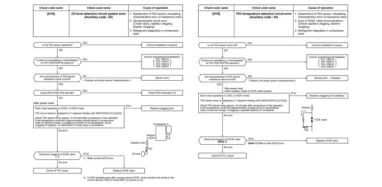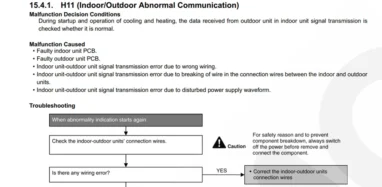Once you step into the HVAC market or working field, you will get to know that there are plenty of different concepts that need to be known so that you can either become a good professional or can troubleshoot problems with your HVAC system by yourself. One such thing is to know the VSAT meaning HVAC because it is one of the most important factors to calculate with the help of a PT chart.
VSAT is essential to understand because it is utilized in various troubleshooting practices and you cannot calculate superheat in HVAC without getting help from the saturation temperature and refrigerant. If you have questions regarding VSAT and its significance in an HVAC system, continue reading this guide as it will go through all these topics in a detailed manner.
What is VSAT and how does it work?
The saturation temperature is often calculated in two conditions: when the water is in its liquid form or vaporized (turned into steam). Vapor or steam saturation temperature is known as VSAT in the HVAC industry while liquid saturation temperature is regarded as LSAT. Both of these saturation temperatures are calculated with the help of selected refrigerants and the currently measured HVAC pressure.
The word saturation is widely regarded as the synonym for the boiling point and saturation temperature is the point where a liquid starts to become vapor or steam. For water at sea level, it is 100 degrees Celsius.
Subcooling and superheating have a direct connection to VSAT at constant pressure because if your HVAC system keeps on adding more heat to the water while it is at saturation temperature, it will reach the phase of thermal expansion and become superheated. On the other hand, if pressure is stopped right when the water is at boiling point, it will turn back into liquid like it was before.
How to calculate VSAT in an HVAC system?
Although there are different ways to calculate VSAT or saturation temperature in HVAC, the simplest one is to get the job done using a PT chart. You may go with mathematical equations as well but it is extremely time-consuming. Also, there are huge possibilities that you may make a mistake while calculating.
- Find the spot where the problem or actual cause of the issues is laying in the HVAC system.
- Use the best suitable tool such as a measuring gauge to measure the current pressure at that very spot.
- Repeat the previous step 2 to 3 times with a 2-3 minutes interval each.
- Take the average of your measured pressure. (Step 3 is not essential but recommended by experts to get the exact and most accurate results.)
- Get yourself a PT chart and look for the pressure column in the table.
- There will be vapor saturation temperature in one of its columns corresponding to your measured pressure.
In most of the PT charts used by technicians, there are two columns for the VSAT labeled as R-12, R-22. These are the two different types of cooling agents or refrigerants that are used in air conditioners and other related HVAC systems. The VSAT will be different so you should look for the answer in your HVAC’s respective field.
PT (Pressure Temperature) Chart
| Temperature | R-12 | R-22 |
| -10 | 4.5 | 22.6 |
| -5 | 6.7 | 26.7 |
| 0 | 9.2 | 31.1 |
| 5 | 11.8 | 35.9 |
| 10 | 14.6 | 41.0 |
| 15 | 17.7 | 46.5 |
| 20 | 21.0 | 52.4 |
| 25 | 24.6 | 58.8 |
| 30 | 28.5 | 65.6 |
| 35 | 32.6 | 72.8 |
Low VSAT in HVAC
Low VSAT is when the air temperature is low or is dropping consistently. Once it goes down from the saturation temperature or boiling point of the water, the water molecules inside the HVAC system will begin to slow down.
This process will allow them to get condensed and transfer back into liquid form. You can simply understand this process by determining the vapor pressure, if it is high then the saturation temperature will be high as well but if vapor pressure is low, VSAT will be low in HVAC.
If VSAT remains low for a long period, there are huge chances that the vapors will get back into the compressor after they have been condensed. If this happens, this could cause some serious damages and issues in your compressor and eventually the whole HVAC system.
High VSAT in HVAC
High VSAT is the point when saturation temperature increases too many folds which could be good at a limited time but can cause issues if it reaches superheat.
If the air temperature is at a high point, the water will stay in vaporized form for a long time which will directly lead to high vapor saturation temperature in HVAC.
As said earlier, the VSAT for water at sea level is 212 degrees Fahrenheit or 100 degrees Celsius, anything above this point will be high VSAT while below this temperature line will be regarded as low VSAT.
If the VSAT remains high for a bit extra, the vapors will vanish way before they reach their destination and it will keep on adding extra heat into the evaporator coils, suction line, and the compressor which can badly affect the HVAC system’s overall performance.
VSAT advantages and disadvantages
VSAT has a great significance in HVAC systems because it can enhance the performance of an HVAC system by providing some huge benefits.
- Improves HVAC system quality and performance.
- It allows users and technicians to quickly adjust and control the temperature with more precision.
- Saturated water or steam is one of the best coefficients of heat which prevents using big equipment to tackle the needs of heat.
- Cost-effective.
- Time-saving.
- A safe way of troubleshooting or effectively operating the system.
There aren’t any cons in VSAT as long as it is working in its best range with the most balanced temperature of about 100 degrees Celsius or 212 degrees Farheise. Do keep this fact in mind that if HVAC is operating for a long time, the saturation temperature could be a little bit high like 101 degrees Celsius.
- Cause issues in the compressor if it reaches above superheat.
- Low VSAT can mitigate or badly affect the HVAC’s performance.


